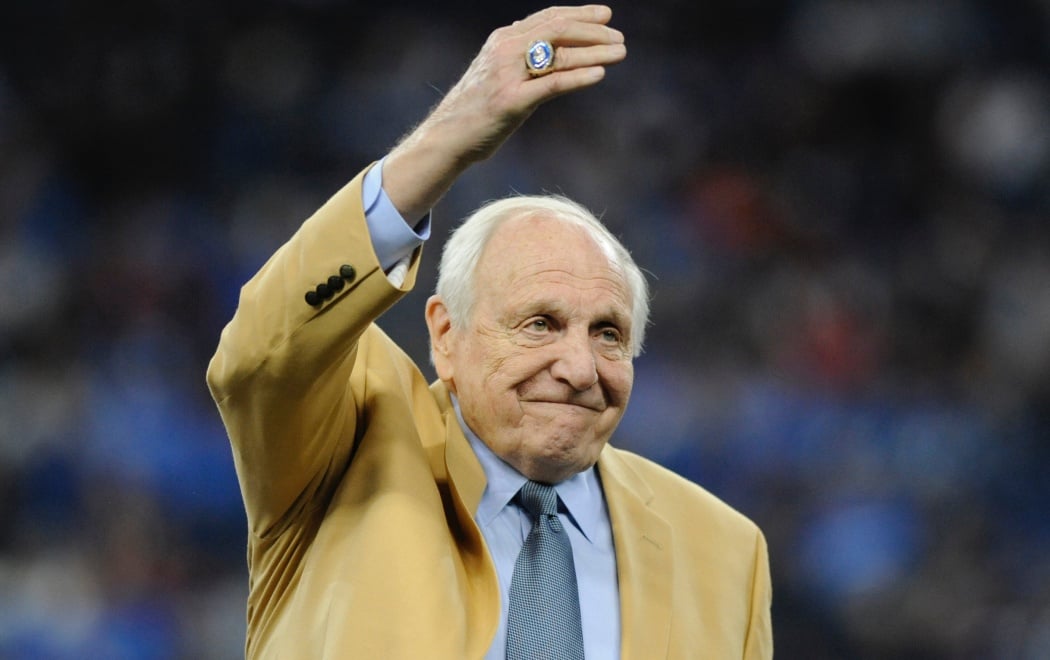Gold Jacket Spotlight: Joe Schmidt, A Revolutionary Player

Loyal fans of the Detroit Lions haven’t had a lot to cheer about in recent memory, but there was a time when the team’s roar intimidated opponents across the National Football League.
For 13 seasons in the 1950s into the 1960s, the player often roaring the loudest roamed from sideline to sideline. He combined brute force with a master tactician’s knowledge of the game. The Motor City appreciated how his motor never stopped, and his hard-nosed, attacking style of play, along with agility and coverage skills, revolutionized the position of middle linebacker.
Joe Schmidt didn’t seek the spotlight, but his play couldn’t be ignored. Voted as his team’s captain nine times and its MVP four times, this week Joe steps into the Gold Jacket Spotlight.
Joe spent his entire playing career and seven-year pro coaching career in Detroit. He was named first-team All-Pro eight times, to the Pro Bowl 10 times (consecutively) and was a member of NFL championship teams twice — as a rookie in 1953 and again in 1957 — along with a runner-up finish in 1954.
Each of those title game appearances came against the other powerhouse of the era: the Cleveland Browns. In the 1957 game, Joe and the Lions held Jim Brown to 69 rushing yards on 20 carries, winning 59-14, with 29 of Brown’s yards coming on a TD run.
Selected to the NFL All-Decade Team of the 1950s and the NFL 100 All-Time Team, Joe was enshrined into the Pro Football Hall of Fame in 1973. His career stats included 24 interceptions and 17 fumble recoveries. Unknown is the number of players he intimidated — sometimes his own teammates — with his 6-foot, 220-pound, granite-like body and a tongue that could dish out as much punishment as his shoulders.
Joe joked that he once stood 6-foot-3 but shrunk 3 inches over time because of the number of running backs he hit. Several Hall of Famers would attest to his tackling prowess, with the late Paul Hornung calling him “the best linebacker in the league.”
Immediately after his playing career ended, Joe joined the Lions’ staff as linebackers coach. One season later, in 1967 at age 35, he was named head coach. He led the Lions to winning seasons in each of the final four years of his six years as the helm. His teams finished 43-34-7 overall, with a 10-4 record and a playoff appearance in 1970 as the highlight. Lions teams have reached the playoffs only 11 times in the 49 years since that memorable season.
Joe didn’t invent the position of middle linebacker, but his dominant play helped shine a light on the “quarterback of the defense.” This week, the Hall of Fame turns its Gold Jacket Spotlight on the man who prompted several teams to adopt a 4-3 alignment, although few found a player of his caliber to be its anchor.
Stories From The Hall of Fame Archives: Pro Football Moves Indoors
World Series’ doesn’t go as planned.
Callie Brownson Makes History
Brownson became the first woman to serve as a position coach during a regular-season NFL game.